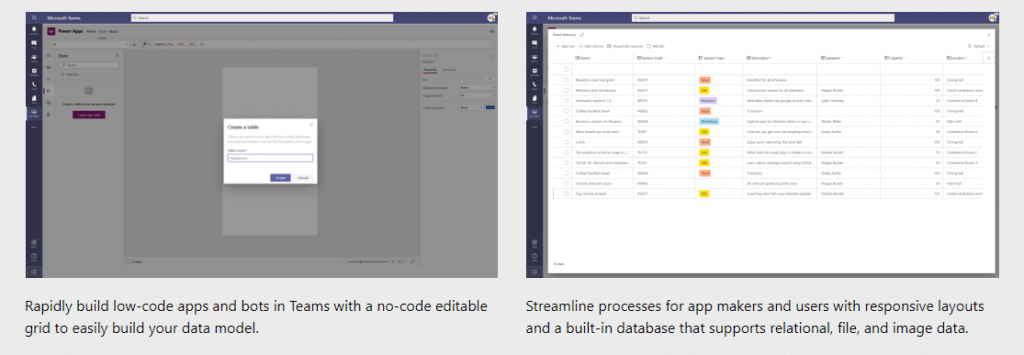Common Data Service is now Microsoft Dataflex, and it’s WAY more than just a name change. This changes everything.
A big announcement happened today. It might not seem like one right now, but I think we’ll look back on this in a year’s time and wonder how we ever made do without this part of the Teams Development puzzle.
The top-line is that the Common Data Service (CDS) is being renamed, but is also coming to Microsoft Teams. This means that developers will have access to a relational data-store right within Microsoft Teams.
Let’s say that again. Inside #MicrosoftTeams, there’s going to be a place for applications to keep data in a persistent store. Tables, columns, rows, relationships. No need to create a database. No extra license, no cost, no setup. Just the data, accessible in Teams for apps to use. ?
This instantly makes it easier to build applications that need complex state, need to store objects, want to collect and work with data. It’s possible to build all these things today, but it requires a knowledge of using a database, or Azure Storage Tables or similar.
Having Microsoft Dataflex be something that “comes with Teams” and that developers can rely on as being there will also help the low/no code development process and enable more complex applications to be built in this way, using technologies such as PowerApps and Power Virtual Agents.
It’s a decision that sounds kinda crazy, but also makes complete sense.

Teams as a Platform
Teams is becoming more than just a collaboration tool – this change means that it’s also going to become the storage location for numerous low/no code applications. This will likely have implications for adoption, information governance and security that we will have to work through in the coming weeks and months. Even understanding where this data resides could be a multi-layered answer.
I think Microsoft know these questions are coming – Dataflex already comes will built-in full audit logs and DLP policies.

I’m a Teams developer, should I delete my database now?
Good question. This is a new announcement, so you shouldn’t rush to anything, but for new projects starting now – if you’re building a Teams application and you need to store data, I’m not sure why you would use an “external” data source, unless you’re storing vast amounts of data or doing something computationally intensive. By using Dataflex your solution will be simpler to deploy, and have a lower cost to run. It’s a bit of a no-brainer.
It’s early days, but I’m pretty excited about what this will do for enabling more applications to come to Microsoft Teams. The great thing about technology is that it’s always changing!








